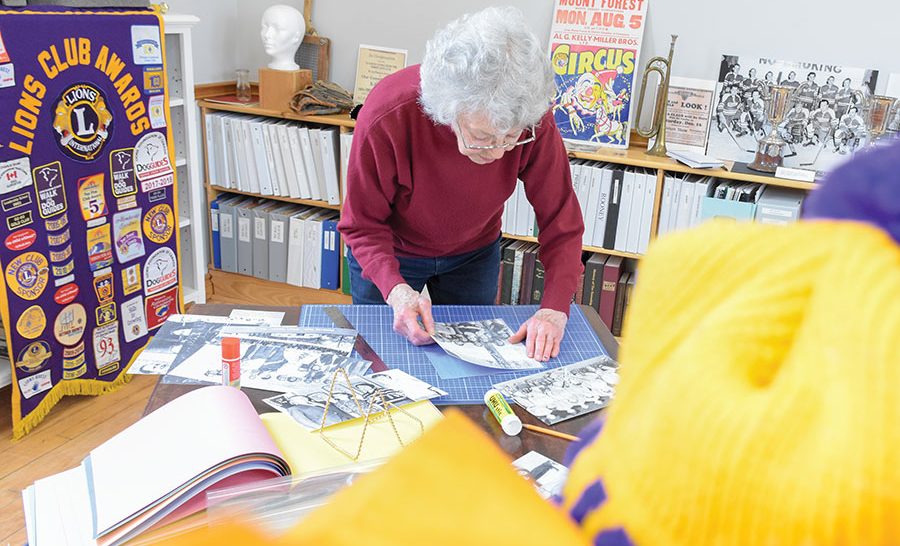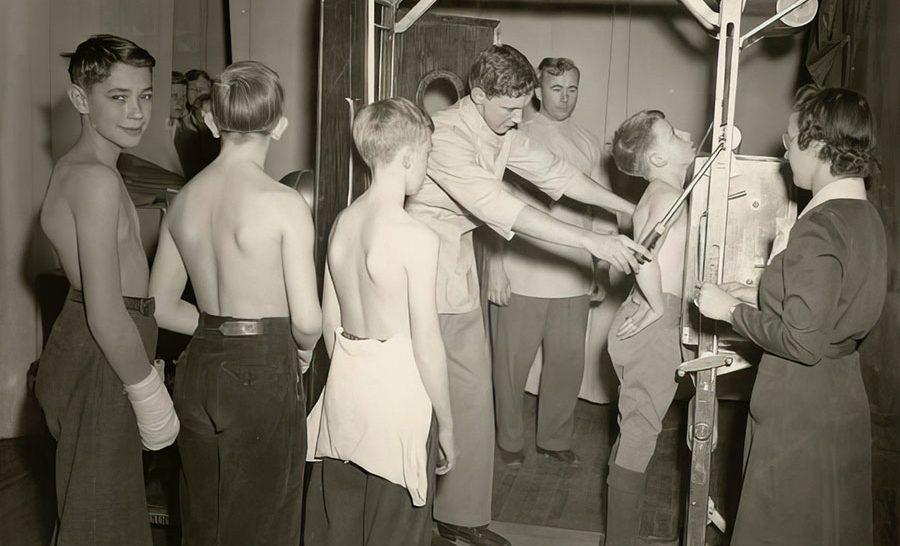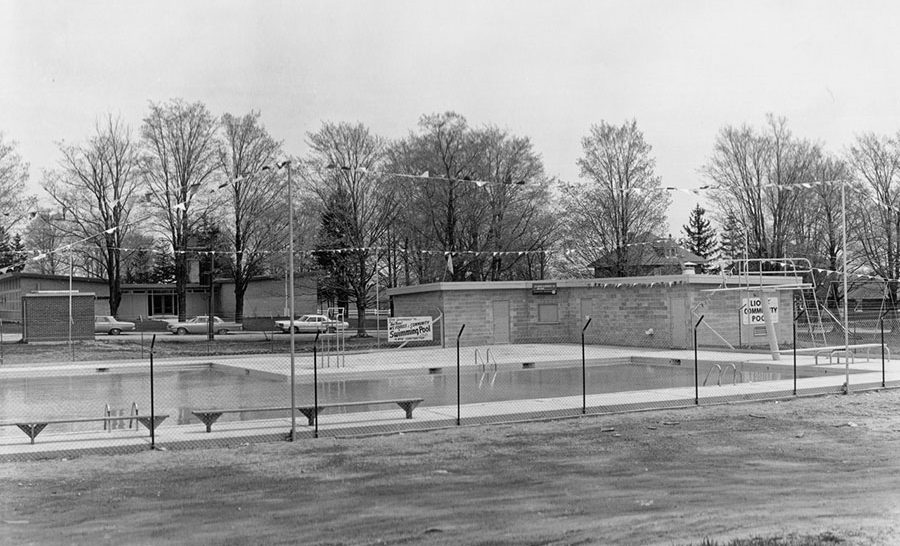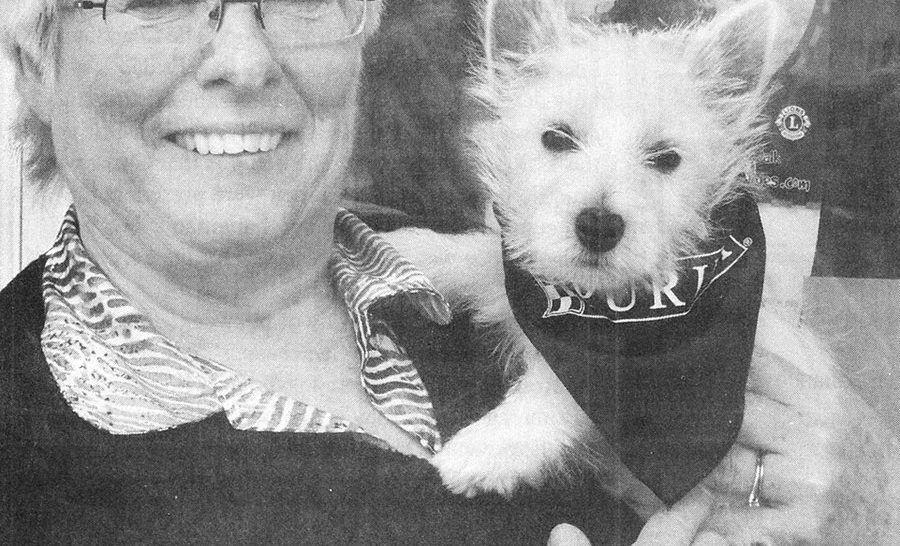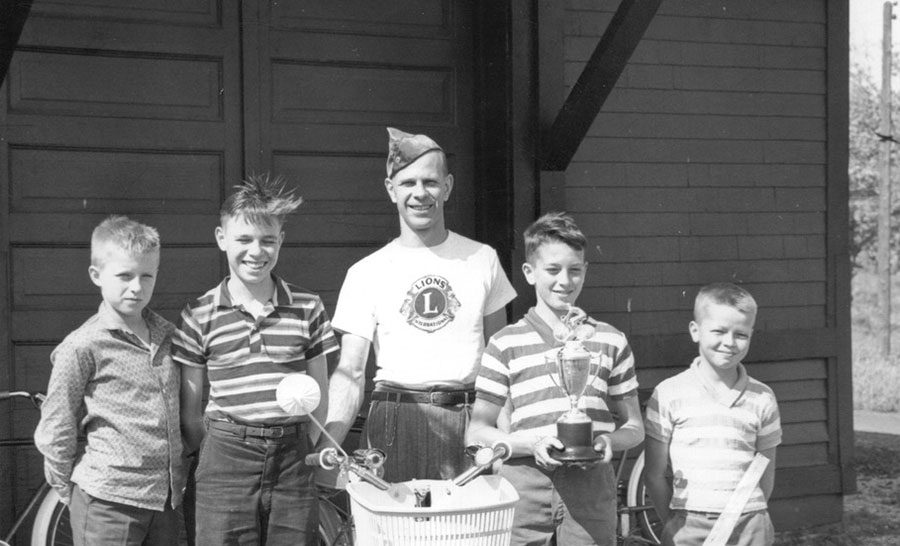MOUNT FOREST – The Mount Forest Lions Club “is always a club that looks forward,” says Kate Rowley of the Mount Forest Museum and Archives.
But to understand where you’re going, requires a look into the past.
Rowley and three volunteers are busy on a recent Wednesday in the Jean Weber Reading Room at the museum and archives.
They’re just some of the volunteers working behind the scenes to prepare for a retrospective exhibit about the Lions Club, ahead of a May 1 club flag raising outside the Main Street building.
Lions Club accoutrements and artifacts surround the room — everything from vests adorned with pins once worn by former members, to old Mount Forest Confederate newspaper clippings and photos.
Volunteer Marlene Markle sorts through historical photos, framing them in Lions’ blue and gold to make them “pop” from a wall in the reading room where they’ll soon be mounted.
Volunteers Debbie Witherow and Beverlee Fettes work to put names to the many young faces seen in black and white photos of a 1958 Lions’ bike rodeo.
More volunteers are in another room querying computer records of their collection for items relevant to the exhibition.
In all, Rowley says there are some 20 people involved in bringing together the retrospective, entitled The Mount Forest Lions: 85 years serving a community.
“Their interests have changed over the decades,” Rowley says of the club, “but what we want to tell is the story, that in 1938, when they started in Mount Forest, the programs revolved around childhood welfare.”
In the club’s early days, Rowley explained, it organized tuberculosis screening programs, “as they would organize a blood donor clinic now.”
The respiratory disease was a particular threat for children, and the club continued organizing screening events through to the Second World War.
From 1938 to 1972, it brought Santa Claus to town, and sponsored a local circus, Christmas food baskets, bike rodeos, sports teams, families in need and playground equipment.
In later years, members put on “effective speaking” events for children, and supported others such as “bowl for kids.”
“Right from the get-go, children seem to have been a focus for the Lions,” Rowley says.
But the club’s support wasn’t limited to children’s interests over the years; it spanned the entire community, which the Lions viewed as an inter-connected whole.
The club avidly backed environmental, recreational, and artistic endeavours with volunteering and fundraising.
Lions raised and donated $50,000 toward the Lions Foundation Canada Dog Guides, $40,000 to a wetlands sanctuary and renewal project on the Saugeen River, and funded upgrades to an outdoor pool opened in 1948 that was named after the late Roy Grant, a club charter member and local lawyer.
“All of those things lead into a healthy community,” Rowley said.
Museum and archive volunteers are also hoping to tell the story of who the Lions were and are.
“They do everything as a group, and they talk about themselves as a collective all the time,” Rowley says with a laugh.
But there are specific, long-serving members, often men, who she says, “formed the strength of this community from the early days.”
Women weren’t permitted to join the club until 1985, but the local group has included women from the beginning, according to Rowley.
Mary Ruth Job became the club’s first female president in 2002 and raised guide dogs. (The late Lloyd Fraser was the first recipient of a guide dog named Gus.)
With the Mount Forest club’s original 1938 charter in-hand, volunteers began diving into the names and backgrounds of the club’s 15 original members, searching for threads tying them to the community’s origins and to the modern day.
“We don’t always come up to current times in our exhibits, but this one we will because they’re still so active,” Rowley says.
The exhibit is formed of photos, documents, artifacts — some from the museum and archives’ permanent collection, and others on loan from current members — which aim to make the history come alive.
Tangible details, such as an original milk bottle from the club’s milk program, or a book of hand-written names from the 1947 Mount Forest Old Boys Reunion, will connect people with past memories and the faces in the many photos being showcased.
An enlarged black and white photo of the Lion Roy Grant pool, Rowley says, represents summer jobs, swimming lessons, family summers, and seniors’ swimming clubs — everything the pool meant to the town for two months of the year.
“You got to make it sing for people, it’s got to be interesting in a lot of ways,” Rowley says.
“You want people to walk in and say, ‘What would this community have been like without the Lions?’”
The retrospective opens on May 1 at the Mount Forest Museum and Archives (102 Main Street South) and will run until Sept. 30.
A special reception for Lions Club members and family will be held at the museum and archives in the early summer (date yet to be determined).




